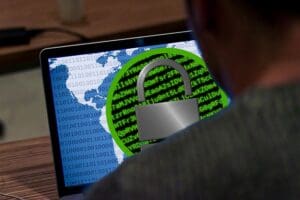Identity involves a person’s most use and most important quality. Matching who a person claims to be with the character they hold is all verification of identity entails. Thus, identity verification weighs if an individual can prove the identity they hold.
Panini.com is a highly regarded company that partners with some of the finest secure identity providers in the industry to allow users to conveniently authenticate ID documents and curb fraud in seconds while streamlining workflow. They produce check scanners to validate documents with highly proven technology.
Identity verification involves various systems and methods where the techniques fall into the following categories:
1. Online verification
Online verification employs multiple methods to check whether a government-issues identity card (id) belongs to the user who presents it. The methods of verification involve human review, biometrics, computer vision, and artificial intelligence. In this method of verification, a user must provide their photo while holding their ID where it is confirmed whether the person on the photo is similar to the one on the ID. This is a very secure method; however, some users view it as very intrusive and inconvenient and more of personal space interruption.
2. Credit Bureau-Based Authentication
This verification method depends on data from one or more of the available credit bureaus. These companies have massive credit information storage on consumers, including social security numbers, names, and addresses. Credit bureau-based authentication employs scores to create a definite match without negotiating the user’s experience. There, however, might not be available data on thin credit files like recent immigrants and young people.
3. Biometric Verification
In this method, biometrics are employed to identify users by checking their physical properties. These techniques of biometrics involve retina scanning, fingerprinting, iris scanning, facial recognition, and voice recognition. After the initial setup, the methods are very convenient for users as they don’t need to answer any questions or recall passwords. Biometrics, however, have some flaws as it is possible to steal them, and mostly frauds access them in that way. It is possible since people post their photos on social media without the knowledge that they can be used against them. In voice recognition verification, thugs can record someone’s voice unknowingly. It is also possible for thugs to hack databases and acquire fingerprints of users they desire to impersonate and access their accounts. When these assets end up with an evil person, it becomes possible for them even to defraud institutions.
4. Knowledge-Based Authentication
Knowledge-Based Authentication (KBA) is a verification method where one’s identity is verified through asking personal questions that relate to their security. These are easy questions for a particular person to respond to but hard for anyone else to answer since they are mostly personal. Such questions involve details about someone’s people, pets, and favorite activities. More safeguards for the KBA method include a time limit for answering the asked questions. One of the greatest benefits of this method is that it is the easiest to grasp for many users and gives responses at ease. However, the most outstanding disadvantage of this method is that it has become easier to discover answers through social engineering and social networking, where thugs acquire answers to other people’s personal questions.
5. Database Methods
These methods employ data from different sources in verifying a person’s identity card and confirm if it belongs to them. Database methods check how risky a user is because they highly reduce the requirement to review data manually. The greatest drawback of employing these methods comes in where there is no assurance if the individual giving the information for verification is similar to the one transacting because of the presence of fraudulent identities online.
Two-Factor Authentication
Two-factor authentication, also called multi-factor authentication, needs customers to dial a code delivered to their phone number or email. This is a familiar verification method to many customers; it is very simple to grasp and use whenever needed. Using the MFA or 2FA makes it easy to verify a customer’s phone number and email address. It is highly useful to confirm if a customer keyed in their information correctly.

The multi-factor or two-factor authentication probes users to give some form of identification, also called a token plus their password and username, before receiving access to their account. The token, just like the password, must be some memorized information in possession of users, like a code acquired from an authentication agency. A token is required to deter people from accessing accounts that do not belong to them. This authentication method is essential in passwords resets and accounts creating. However, in this method, users are required to have their mobile phones for authentication.
Instances where identity verification is necessary
Identity verification services are important for both online and in-person verification. The following are instances where complete security is required:
- Insurance and telecommunication industries.
- The finance sector, especially in banks where identity verification is useful to avoid stolen identity theft.
- Government and administration.
- Platforms and Apps.
Featured Image by rawpixel.com




